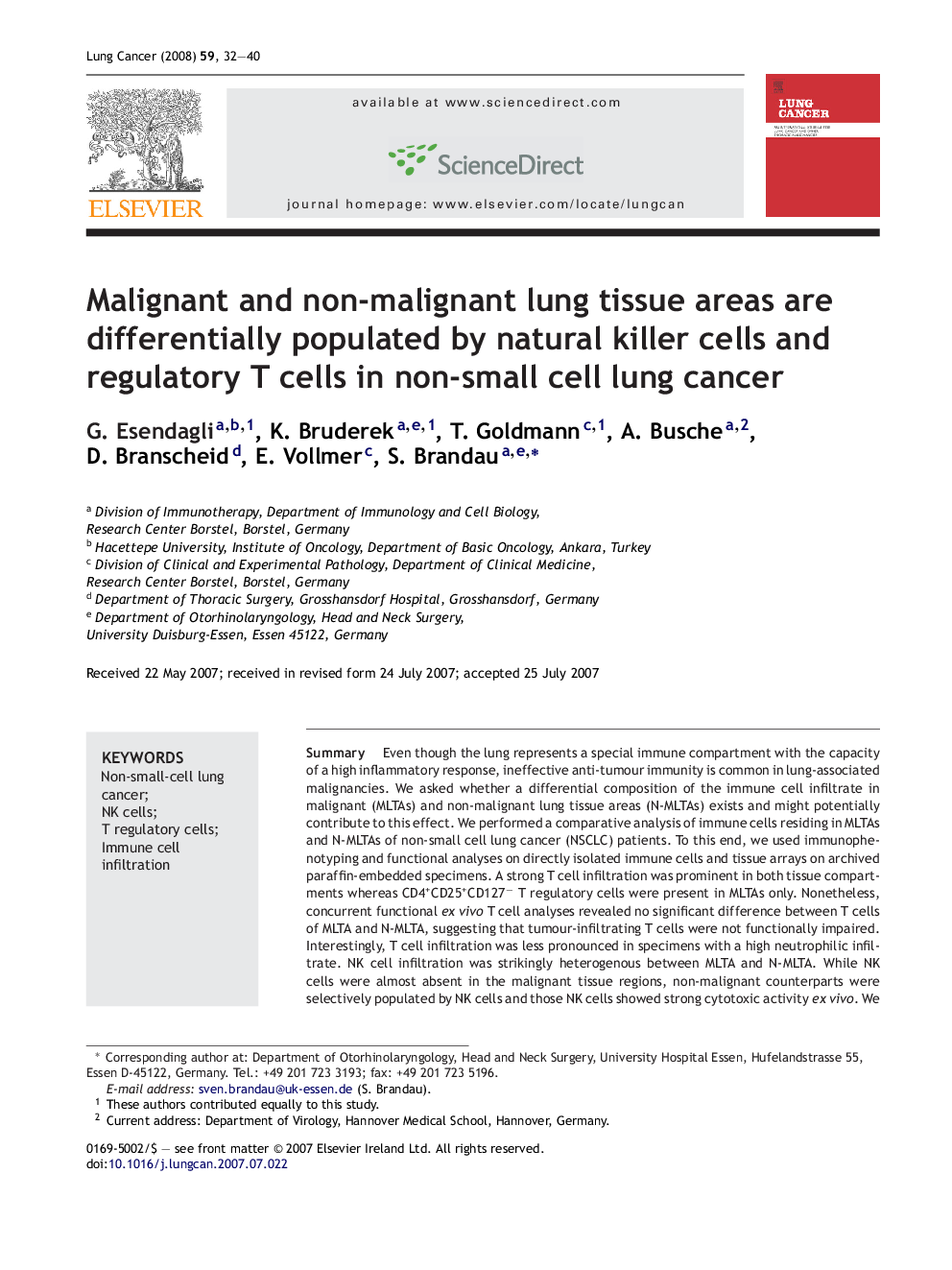| Article ID | Journal | Published Year | Pages | File Type |
|---|---|---|---|---|
| 2143565 | Lung Cancer | 2008 | 9 Pages |
SummaryEven though the lung represents a special immune compartment with the capacity of a high inflammatory response, ineffective anti-tumour immunity is common in lung-associated malignancies. We asked whether a differential composition of the immune cell infiltrate in malignant (MLTAs) and non-malignant lung tissue areas (N-MLTAs) exists and might potentially contribute to this effect. We performed a comparative analysis of immune cells residing in MLTAs and N-MLTAs of non-small cell lung cancer (NSCLC) patients. To this end, we used immunophenotyping and functional analyses on directly isolated immune cells and tissue arrays on archived paraffin-embedded specimens. A strong T cell infiltration was prominent in both tissue compartments whereas CD4+CD25+CD127− T regulatory cells were present in MLTAs only. Nonetheless, concurrent functional ex vivo T cell analyses revealed no significant difference between T cells of MLTA and N-MLTA, suggesting that tumour-infiltrating T cells were not functionally impaired. Interestingly, T cell infiltration was less pronounced in specimens with a high neutrophilic infiltrate. NK cell infiltration was strikingly heterogenous between MLTA and N-MLTA. While NK cells were almost absent in the malignant tissue regions, non-malignant counterparts were selectively populated by NK cells and those NK cells showed strong cytotoxic activity ex vivo. We report that malignant and non-malignant tissue areas in NSCLC are selectively infiltrated by certain immune cell types with NK cells being displaced from the tumour tissue. These phenomena have important implications for tumour immunology of NSCLC and should be considered for the development of future immunologic intervention therapies.
